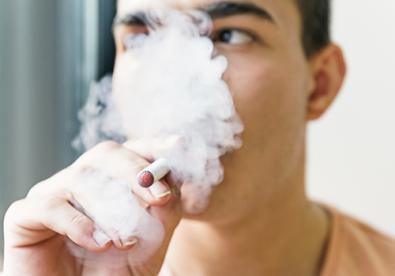There is little question that youth e-cigarette use has been on the rise. In 2018, an estimated 3.6 million kids reported “current use” of e-cigarettes (defined as use on at least one day in the past 30 days), up from just 220,000 kids reporting such use in 2011 (See National Youth Tobacco Survey findings). Although youth e-cigarette use raises public health concerns, there’s also a public health upside to e-cigarettes, as they have been shown to be an effective tool in helping current adult cigarette smokers kick the habit and are a safer option for current smokers than combustible tobacco products (e.g., cigarettes). Therefore, it seems that broad restrictions on everyone’s access to these products is probably not the solution here. So what is the answer? How do we keep e-cigarettes out of the hands of children, but maintain their availability for adult cigarette smokers? Let’s track what’s recently been done on the federal and state/local levels to address the issue.
On the federal level, per Food Drug Administration (FDA)'s May 2016 “Deeming Rule,” e-cigarettes became subject to FDA’s tobacco product authorities, including, most notably, the requirement that e-cigarettes obtain FDA premarket authorization. For most products, such authorization requires submission of a Premarket Tobacco Product Application (“PMTA”). In their PMTAs, e-cigarette manufacturers must demonstrate that their proposed e-cigarette product is “appropriate for the protection of the public health.” Although FDA released guidance in June 2019 related to the PMTA process, there is still a considerable lack of clarity with regard to how manufacturers can show this broad review standard is satisfied.
The deadline for PMTA submission was initially set for August 2018, but in 2017, FDA pushed back the deadline to August 2022, prompting a lawsuit against the Agency (AAP et al. v. FDA (S.D. MD)). In a July 2019 ruling, the federal judge, in this case, ordered FDA to impose a 10-month deadline for the submission of PMTAs. As FDA gears up to accommodate PMTA reviews under this accelerated time frame, the Agency noted that it will also continue utilizing other regulatory tools to combat youth e-cigarette use, including enforcement against retailers selling to minors and youth educational and advertising campaigns.
It remains to be seen how exactly implementation of the PMTA process will impact access to e-cigarettes. However, it’s likely that only large, well-funded manufacturers will be able to jump through the regulatory hurdles needed to obtain authorization for their products, which will in turn limit access, at least to some extent (as many small and mid-size companies who can’t jump through the hurdles will be forced to withdraw their products from the market). Also, we may see FDA use the PMTA process to eliminate access to certain types of e-cigarette products with broad youth appeal (e.g., fruity and candy-like flavors), limit the claims manufacturers can make about these products, require additional warnings, and/or place restrictions on distribution.
There have also been efforts to pass federal legislation aimed at restricting youth access to e-cigarettes. For example, in May 2019, Senator Mitch McConnell introduced a bill (the Tobacco-Free Youth Act) that would set a minimum tobacco purchasing age of 21 (which would apply to all tobacco products, including e-cigarettes). This seems to demonstrate the perceived importance of the youth access issue given that McConnell represents Kentucky, a major tobacco-growing state.
On the state and local levels, there have been a wide range of efforts aimed at restricting access to e-cigarettes, from increasing the minimum purchase age for e-cigarettes to 21, to taxes, to outright bans on these products. Below are some examples of these efforts:
-
San Francisco: In June 2019, an ordinance was passed (and later signed by the mayor) that will prohibit businesses in the city from selling e-cigarettes that have not received FDA marketing authorization (which none have yet). The ordinance will also ban all e-cigarettes that have not received FDA marketing authorization from being sold and distributed to consumers in the city (ordinance scheduled to take effect in early 2020).
-
Vermont: As of July 2019, state law prohibits anyone from causing e-cigarettes or substances containing nicotine (or intended for use with e-cigarettes) that are ordered or bought by mail, phone, or over the Internet to be shipped to anyone in Vermont other than a licensed wholesale dealer or retailer; a 92% tax on e-cigarettes will also go into effect.
-
Minnesota: As of August 2019, use of e-cigarettes in most indoor spaces is banned.
-
Beverly Hills: As of January 2021, an ordinance will take effect that prohibits gas stations, pharmacies, and convenience stores from selling tobacco products, including e-cigarettes.
Preventing youth use of e-cigarettes while maintaining availability of these products for current adult cigarette smokers is a complicated charge for legislators and regulators. While it will take some time to evaluate the impact of recent (and soon-to-be implemented) federal and state efforts, as next steps are considered, the need for balance should be kept at the forefront.



 i
i


